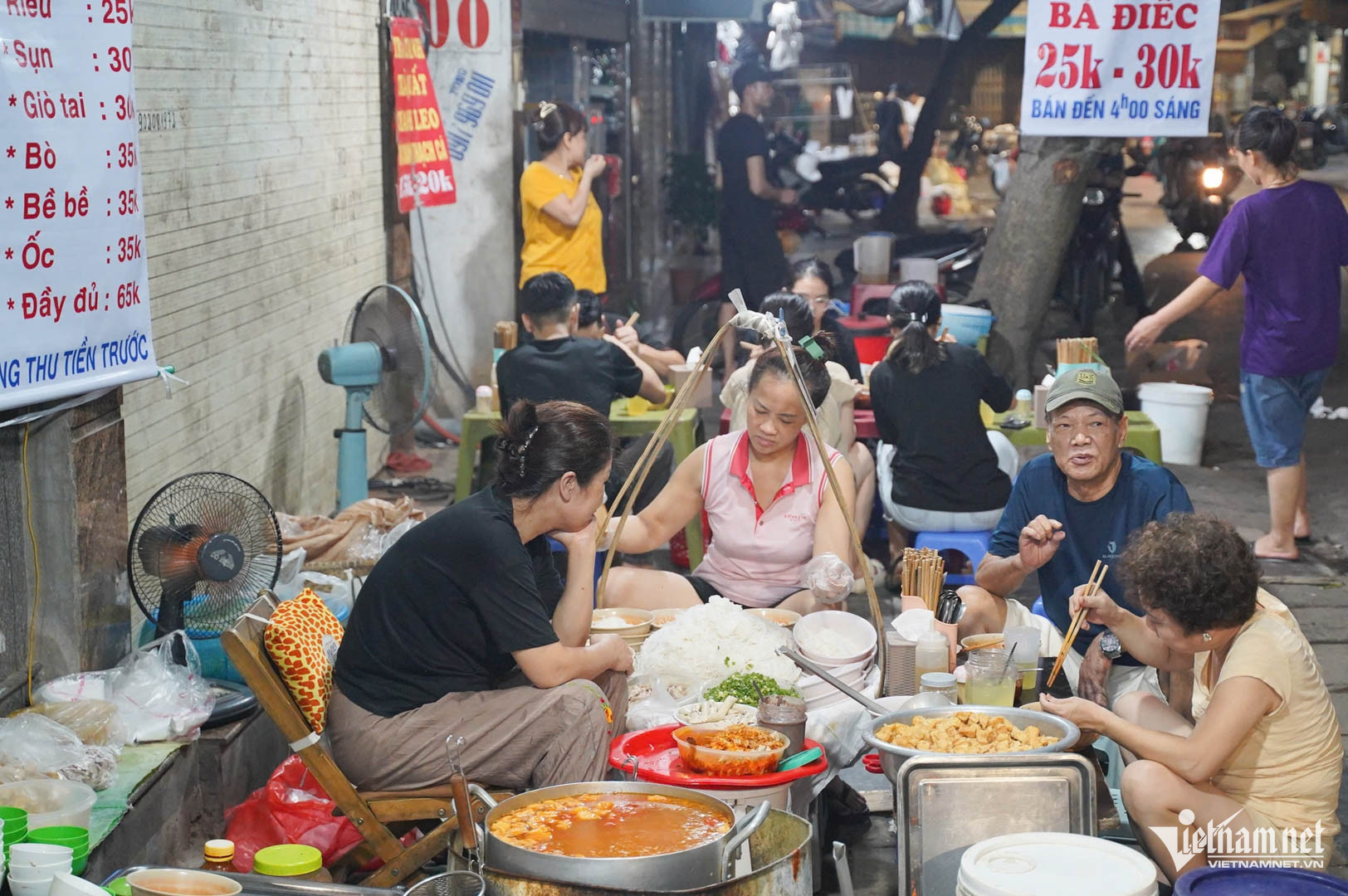
“My clients are mostly the loyal ones. But many people don’t know my real name. Previously, when my mother-in-law ran the stall, people called it ‘bun rieu ba mom’ (bun rieu of the toothless woman). After I took over my mother’s business, they began to call the stall ‘bun rieu ba diec’ (bun rieu of the deaf person),” she said.
“The name sounds funny, but it is easy to remember,” said Giang Thi Hoa, the owner of the stall while preparing tables and chairs to to receive the first clients of the night.
Hoa, 54, has been selling bun rieu there for 20 years. Previously, Hoa’s mother-in-law was the owner of the stall, while Hoa was an assistant. The two of them sold bun rieu on Duong Thanh street in the central business district of Hoan Kiem.
Hoa took over the business eight years ago, continuing to sell bun rieu made with the recipe handed down by her mother in law. However, the stall has moved to Nguyen Thiep street, which is near Hoa’s home.
“My mother-in-law cooked bun rieu with a traditional method and flavors and I use the same recipe. My mother's bun rieu stall helped raise 10 children, so we are very proud of it,” she said.
Hoa prepares bun rieu in a small corner where there is a small table with materials and spices on it. Next to it is a pot of simmering broth. There is a shoulder pole on the left carrying a basket of noodles and a lot of large bowls. Plastic tables and chairs are placed against the doors of the surrounding houses.
Asked about the name ‘bun rieu of the deaf’, Hoa said she has problems hearing so customers have to repeat orders many times and speak loudly. However, she has recently been using a hearing aid, so her hearing has improved and she no longer prepares the wrong dishes.
Hoa sells bun rieu every day from 6pm to 2am. If it rains, she finishes the sale sooner than usual. The time from 8pm to 10pm is the busiest for her.
According to Hoa, the most important ingredient is the broth. To obtain rich broth, she simmers bones for many hours to get the first extract. When preparing a bowl of bun rieu for clients, she pours the broth on vermicelli, crab-roe and other toppings in a bowl.
“I always carefully measure every ingredient for the broth to be sure that it is not too salty or bland. The bones and the crabs must be fresh to ensure a good taste,” she said.
Hoa said she uses materials provided by a loyal supplier of many years. She buys crabs, soya curds, mantis shrimp and fennel, and then makes preliminary processing at home before she brings all the processed ingredients to the stall in the evening for sale. It is more difficult to keep the ingredients fresh in summer.
Hoa said her shop mostly serves loyal clients who have been eating Hoa’s bun rieu for many years.
“There are clients who began eating my bun rieu when they were boyfriends and girlfriends, and then continued eating after they got married and had children,” she said.
“If I make some changes with my recipe, the quality and taste is different and recognized by my loyal clients,” she said.
Hoa calls herself a petty merchant who does small-scale business, so she respects every client and serves them with a smile.
One of the reasons that makes Hoa’s bun rieu favored by clients is the reasonable price. A bowl of Hoa’s bun rieu is VND25,000-65,000.
The most expensive bun rieu, VND65,000, is full of toppings, including mantis shrimp, soya curds, animal cartilage and beef. Clients can also order more toppings, such as cracklings, balut, fried dough sticks, and shrimp paste.
Shrimp paste is considered a specialty. Some foreigners dislike it, but gourmets always order it.
Linh Trang - Kim Ngan